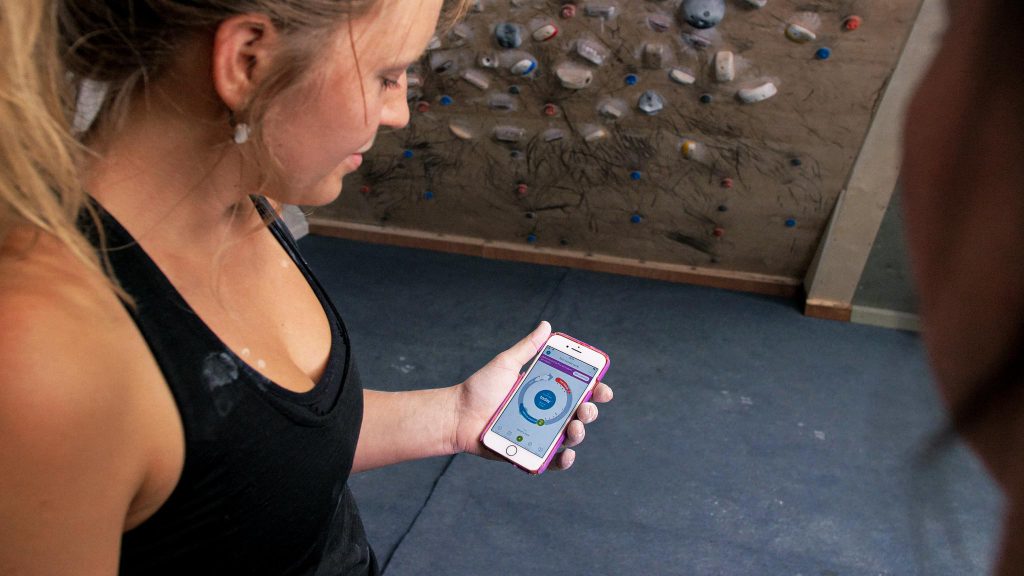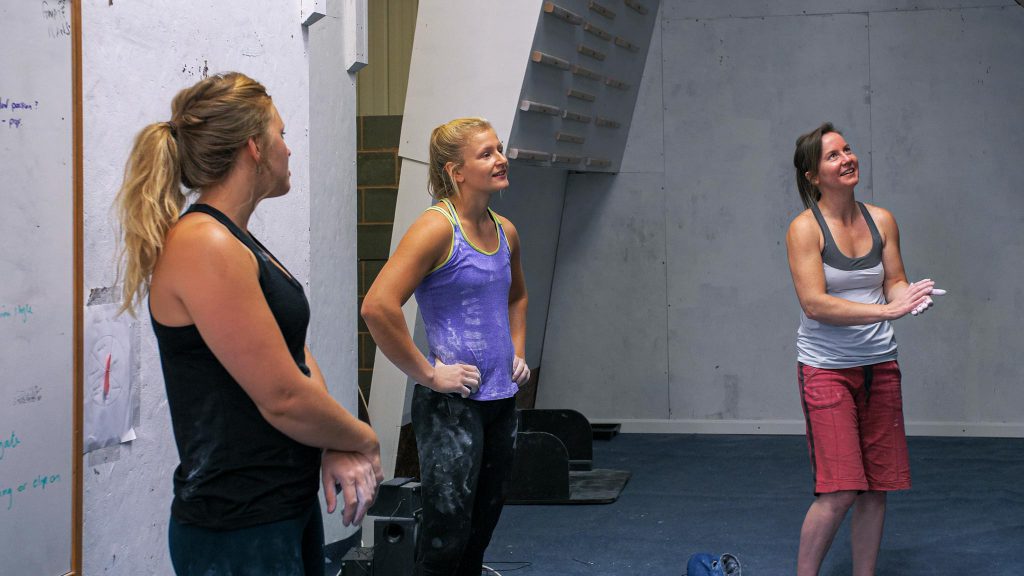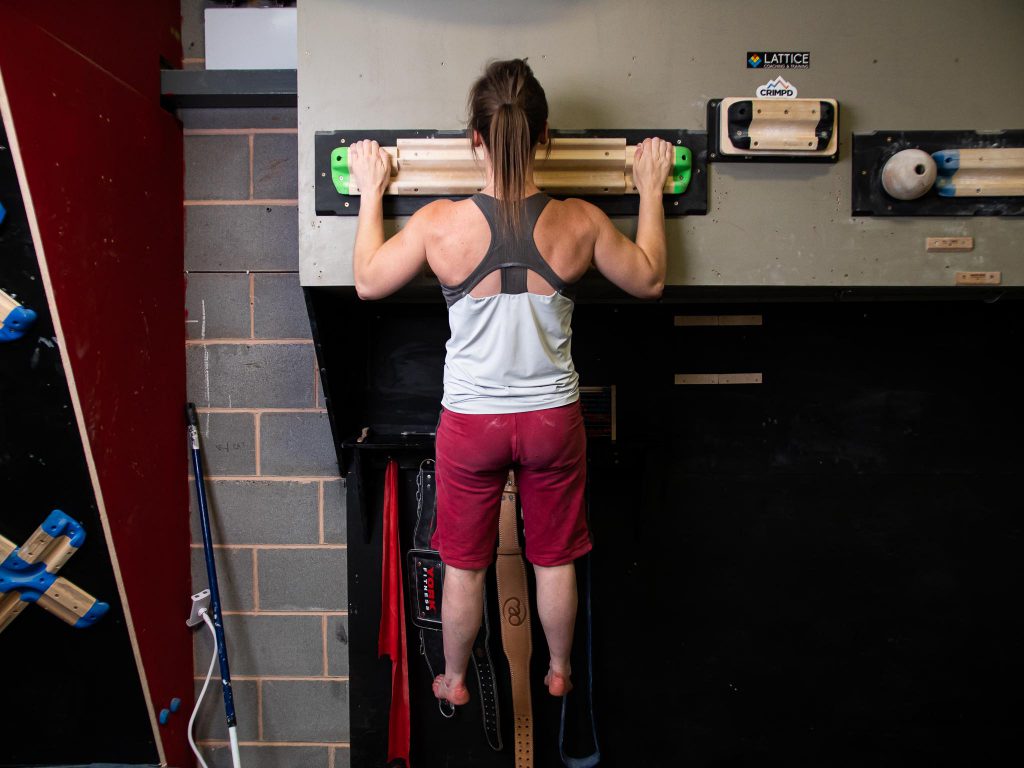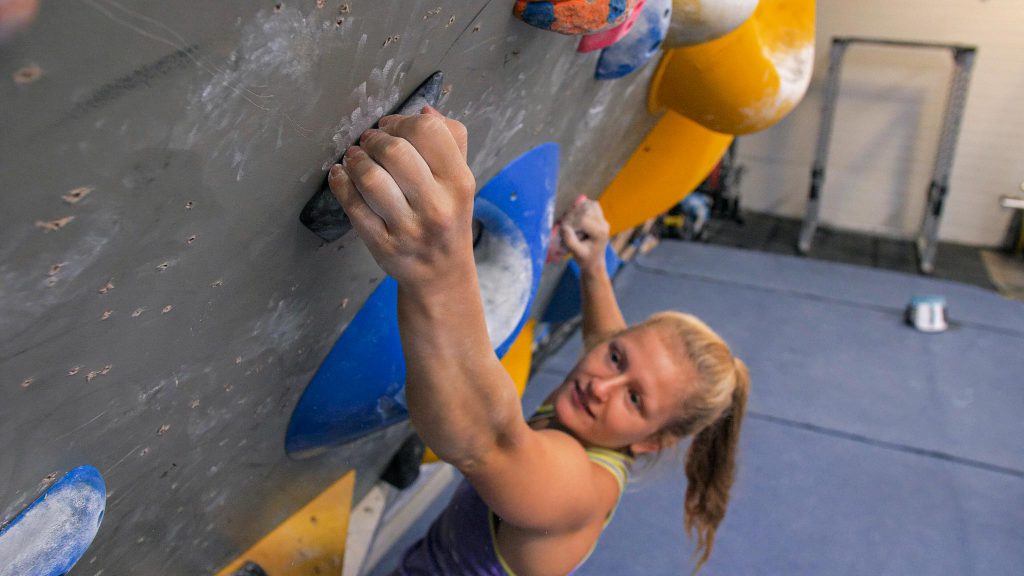The Female Climber Series: Training adjustments for health and energy level fluctuations
In case you missed it, you can catch up on part one here!
Once you have tracked your cycle, you will have information that will help you make informed decisions about how to adapt your training. Adaptations to your training can come in many forms; from syncing your deload weeks, to adapting specific training sessions, to being more aware of your nutrition or stress levels. You might even look to introduce more freedom at times of lower motivation and take a step back from structured training or reduce the intensity to help with energy levels. I know this can seem counterintuitive to us keen climbers – surely more is more, and dropping sessions means “failing” at training? The key thing with training is consistency over months and years, so if making some simple changes improves the consistency of your training, then it will likely be beneficial in the long term. Below are a few core changes that can be made with information gathered during tracking.

“My cycle varied significantly in length” or “Through tracking I realised that I am missing periods”
If our energy expenditure exceeds our energy intake we go into low energy availability. The energy we take in through our food is required for movement (climbing, training, walking to the shops etc.), but also to fuel life processes such as hormone production. If we don’t have sufficient energy available, our bodies will always prioritise movement and it will down-regulate the other life processes in order to do this (you can imagine this was an important evolutionary step, as it was always more beneficial to survival to be able to move to get food or away from danger).
Energy Intake (food) – Energy Expended (movement) = Energy Availability (energy remaining for life processes)
Our menstrual cycle and periods are governed by our hormones, and therefore can be disrupted if our hormone production is down-regulated through low energy availability. Low energy availability is a diagnosis by elimination, so it is always important to seek medical advice if through tracking you find significant irregularity in your cycle. If other reasons are ruled out and you experience more acute shortening or lengthening of your cycle when you start training or throughout your training, then some adjustments to try are;
- Reducing the volume and intensity of training – by completing less sessions in a week you will allow more time for recovery.
- Increasing the frequency of deload weeks – by scheduling deload weeks more frequently, we build up less fatigue.
- Look at your energy intake and especially try to bunch carbohydrates around training – carbohydrates are the main fuel for high intensity training and climbing as well as being important in signalling hormone production, so carbohydrates are a key contributor to the “energy in” part of the energy equation.
- Zoom out and take stock of the other things in your life. Lots of things in life can be “stresses”, and it may be that your training and nutrition haven’t changed, but you have started a new job and are commuting 20 miles there and back, or you are going through high emotional stress.
It is really important to emphasise that our period is just one piece of the puzzle when it comes to being a healthy climber, and low energy availability can manifest itself in different ways. As always it is individual, and there are numerous examples of athletes that have maintained their period, only to get recurring injuries, illnesses, or stress fractures (this mainly comes from the running community). Therefore, it is important to look at the whole picture when it comes to overtraining or underfueling. The menstrual cycle is just one marker of health and other markers such as fatigue, poor concentration or memory, low mood or motivation, and needing more and more coffees to get going are still as valid as ever!

“My energy levels are lower and it takes me longer to recover during the week before my period.”
It is common to feel lower energy in the week before our periods (depending on the individual this may be a few days before and a few days into menstruation i.e. the overlapping period between two cycles). This part of our cycle is termed the late luteal phase. Our energy levels are influenced by a number of factors, including the role that estrogen and progesterone play in our brain, muscle protein synthesis and recovery. Furthermore, a common premenstrual symptom is disruption to sleep, which is integral to recovery, coordination, concentration and mood!
A simple way to make the most of the rest of our cycle is to schedule a deload week during the late luteal phase (commonly referred to as PMS) or potentially overlapping from the late luteal into menstruation. By scheduling a deload week during the time in our cycle where we may feel less motivated and lower in energy, we kill two birds with one stone. We make it easier to be more flexible when arranging our training week, as we simply have fewer sessions to fit in, so if we feel low motivation or tired one day we can simply push a planned session to another day. Having fewer sessions means we have more energy for the ones we do do, and therefore, are likely more motivated for them. Although consistency in exercises is key to making adaptations, maintaining motivation and not dreading having to do certain sessions will help with consistency and sticking with training in the long term.

A few simple things that we can do during this deload week are;
- Reduce the overall volume of training to allow more rest.
- Use lower intensity climbing sessions to focus on movement efficiency or being playful with sequences.
- Focus on stability or good form in conditioning exercises rather than pushing the weights and intensity.
- If completing higher intensity sessions, cut them in half (there is nothing to say you can’t complete high intensity training or climbing during deload weeks, but keep the sessions short and fewer). This is where you can be selective about which higher intensity sessions you maintain during a deload week. You might choose those that are more important for your goals, or those you enjoy most!
- Be aware of fueling with carbohydrates before higher intensity sessions and of overall protein intake (this is actually good advice for any climber, but could be particularly useful during the luteal phase).
A deload week doesn’t mean dropping everything and depending on what we find it easier to motivate for we could either maintain some structured conditioning and keep our climbing unstructured or maintain fewer structured climbing sessions and drop conditioning to solely stretching or mobility.

“I get cramps that make me feel like I don’t want to climb”
Cramps are one of the most common symptoms associated with periods. They can range from uncomfortable to incredibly painful, and unsurprisingly they can make us feel like we don’t want to exercise. Cramps can also be more pronounced during puberty when our menstrual cycles are just getting going – I can still remember the streams of girls at school lined up at the side of P.E. lessons due to bad period cramps. Does this mean that period cramps prevent us from doing exercise? The blunt answer to this one is “no”, but this needs to be administered with a dose of subtlety and compassion.
- Keep moving, but make it gentle. If you suffer from bad cramps it has been shown that movement helps to ease the pain (whether this is due to some physiological mechanism, or simple distraction I can’t be sure, but ultimately it probably doesn’t matter). Although cramps might make the prospect of throwing ourselves at the Moonboard unattractive this doesn’t mean we can’t use climbing movement to ease the discomfort. As we have seen above, we can sync this phase when we experience cramps with a rest week, and so use easy mileage or low angled climbing as a form of gentle movement. To give intention to these sessions we might want to experiment with mindful movement and coordinating movement with breathing, or relaxing our grip and finding well balanced positions.
- Reduce load on the lower back and abdomen. We often use exercises in training that involve wearing a harness and attaching weight to it, and this might feel like adding insult to injury when we have cramps. Depending on how many days cramps are experienced for, this could simply be a matter of being flexible with our weeks and scheduling our max hangs for Saturday instead of Monday. Another option is to drop the weights during this week and focus on form in conditioning exercises. For example, if I am working on weighted pull ups I may schedule my rest week when I have my period due to the cramps I experience, and complete the same exercise but only at bodyweight, focusing on good scapula engagement and smooth movement throughout the pull up. The following week my next 3 week block of training will start and I will be back to adding weight when the cramps are long gone.
- Use supplements to ease the symptoms. In the 7 days leading up to your period you can start to preempt the cramps. We often think about taking pain relief during our periods – sort of like putting a plaster over a cut. This approach is more like taking measures to reduce the chance of tripping over a cutting yourself. Magnesium, Zinc, and Omega-3 fatty acids may help reduce cramping if taken in the lead up to your period. This may be a particularly useful approach to try out for elite climbers who have a competition schedule that can’t be synced with their menstrual cycle. Although they might be able to adjust training, a big consideration will be how to mitigate symptoms if a competition falls on a day when they have cramps.
- Use pain relief. This may seem so obvious that it is barely worth including, but the “I don’t need it”/”It’s not that bad”/”If it doesn’t go away in an hour I will take some” attitude towards pain relief is widespread, and period cramps are no exception. With the information from tracking, you can know when they are likely to come on, and be ready with aspirin. Using this form of anti-inflammatory could be more effective due to the mechanism of effect on prostaglandins. If your cramps are bad be prepared and take them from the onset. Again, being prepared in this way could be particularly useful for competition climbers.






